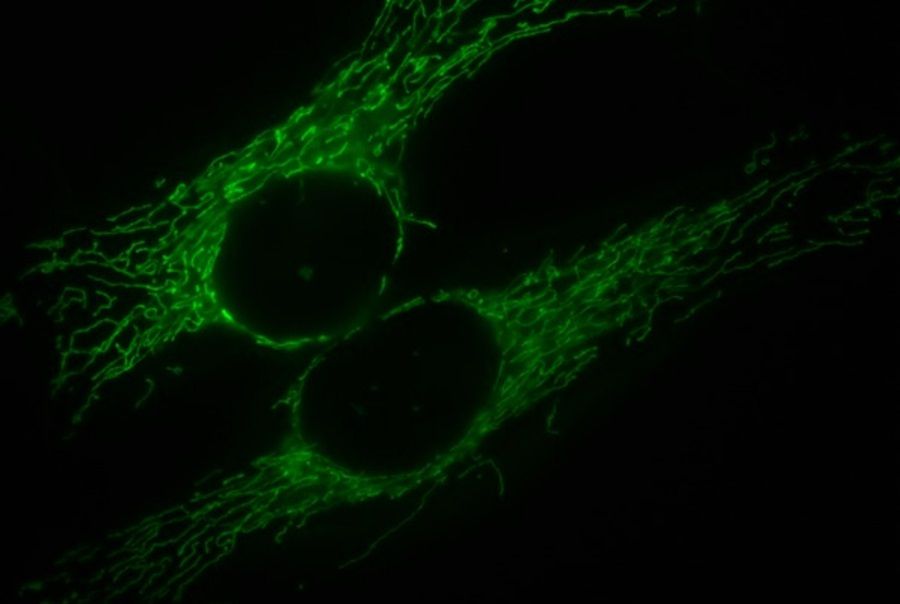Destroyers of mutant genes in mitochondria

Destroyers of mutant genes in mitochondria
A recipe has been developed for proteins that will destroy non-functioning mitochondrial genes in the body and make room for their healthy counterparts. This solution – it was developed by a team of Pole in Cambridge – has already been tested on mice. This is an important step toward treating an important group of metabolic diseases.
World Chor Awareness Week is celebrated every year in the third week of Septemberob Mitochondrial. – Mitochondrial diseases can have rotion symptoms. But usually it is damage to the organow, whichore need a lot of energy. Such bodies are mozg, muscle, heart or eyes – mowi in an interview with PAP by Dr. Michal Minchuk. This is a Pole thatory directs research on. treatment of diseasesob mitochondrial damage at the University of Cambridge.
As he explains, mitochondrial diseases are associated with e.g. someore myopathies (muscle atrophy), neuropathies (neuron atrophyow), but also hearing or vision loss and kidney and liver disease. Mitochondrial diseases are estimated to be an affliction, ktora affects perhaps as many as 1 in 5 thousand. osob.
Mitochondria are the cellsorkowe power plants – in them sugar and fat are burned, whichory we eat. Mitochondria are unique fragments of the comorki. They have their own DNA and their own mechanisms for producing proteins from it. Usually one comorka can have up to hundreds or thousands of mitochondrial DNA molecules. Sometimes, however, mutations in mitochondrial DNA lead to defects in energy production mechanisms.
It is usually the case that in the comorce is spoiled by part of the geneoIn mitochondrial. The disease usually becomes apparent only when the mutation occurs in 60 percent of the. The mitochondrial DNA of a given tissue.
Researchers from the team of Dr. Minchuk in a publication in "Nature Medicine" have demonstrated a new way toob on how to treat such mitochondrial diseases. They developed a protein machinery thatora reaches the damaged genesoin the mitochondria and destroys it. As a result, in the comoThe rce creates space for the comorka reconstituted new, fully functional mitochondrial genes, and thus defect-free mitochondria.
– We were able to get this therapy outob to study on an animal model. Previously, scientists succeeded only in vitro, says Dr. Minchuk. As he points out, the experiments were done on mice. Mutation, whichora manifested as heart disease, the animals had in the mitochondrial genome. Such a mutation is the mouse equivalent of one of the mutations in the human mitochondrial genome. After the therapy was applied, the mice began to function efficiently.
The structure designed by the researchersow penetrated into the comorec of the mouse heart, she searched for mutated mitochondrial genes and brought them to annihilation. And because the comorka maintains a constant number of DNA in the mitochondria, in place of the destroyed mutated copies new – healthy ones were created. This allows the affected tissue to function properly.
Dr. Minchuk tells of a particularo³³ methods. He explains that in destroying mitochondrialoin participating proteins – the so-called. zinc fingers, equipped with protein "scissors", ktore only cut through the DNA of the damaged mitochondrion. The presence in the mitochondrion of such slit DNA is for comorki signal to annihilate the broken DNA fragment and replace it with a new, properly functioning version.
At the romitochondrial diseases, however, mutations in the mitochondria can be ro¿ne. So if the therapy is ever used on humans, a probka and sequenced the mitochondrial genome to diagnose mitochondrial mutation. When you know the mutation, you can design the right zinc fingers that act like a "magnet with scissors", ktory this mutation will detect and destroy. – This is quite difficult and labor-intensive, but should be possible for any mitochondrial mutation, Dr. Minchuk says. The therapy would thus be tailored to the needs of a particular patient. So far, however, studies have not been conducted on human.
In the same issue "Nature Medicine" was published roA parallel paper by a team from the University of Miami led by Prof. Carlos Moraes, demonstrating how damaged mitochondrial genes can be destroyed using proteins other than zinc fingers, the so-called “zinc fingers”. TALEN proteins. This is an additional argument thatory shows that the method scientistsow from Cambridge has a lot of potential, and teams are working on it in roThe researchers in different parts of the globe.
Sourceosource: PAP – Science in Poland, fot. CC BY 4.0/ Wikimedia Commons/ Simon Troeder




